| |
Champion Lake Vet Centre
121 Westfield Road,
Camillo WA 6111
| |
|
|
 | | | Toxic Christmas foods | | | | | | | | During the holiday season, many of us want to be able to treat our pets a little too! So, our team would like to provide an official “naughty or nice” Christmas food list, outlining which foods are potentially harmful to your pet, and which ones you can safely surprise them with for a little seasonal joy!
“Naughty” foods – potentially harmful or toxic to pets
Whilst your pet will likely give you those adorable puppy dog or kitten eyes to try to convince you otherwise, it’s best to avoid feeding our four-legged friends any of the following:
- Fatty leftovers including Christmas ham, turkey skin, sausages and nuts, as these can cause symptoms of gut upset or painful pancreatitis in some pets
- Raisins and grapes (e.g. in Christmas pudding), which unfortunately cause severe kidney damage in pets
- Chocolate, cacao or coffee beans, as these can cause symptoms of gut upset, an abnormally fast heart rate or even seizures depending on the quantity consumed
- Meals or stuffing containing onions or garlic, which can cause damage to your pet’s red blood cells
- Cooked bones, which are much more likely to splinter into sharp pieces and cause damage to the mouth or gut
“Nice” foods – great for treating your pet to some seasonal joy!
Unless your pet has any specific dietary requirements, here are some tasty, pet-safe Christmas nibbles that you and your pet can both enjoy:
- Lean cuts of cooked meat, such as turkey breast, boneless salmon or shelled prawns
- Cooked veggies, such as carrot, sweet potato, peas, green beans and pumpkin
- Certain summer fruits (cut into small pieces), such as melon, bananas, peaches and mangoes, as well as strawberries, raspberries, blueberries and apples (especially cold from the fridge on a hot day!)
If you stick to these healthy Christmas treats for your pet, you’ll be “sleigh-in it!” | |
|
|
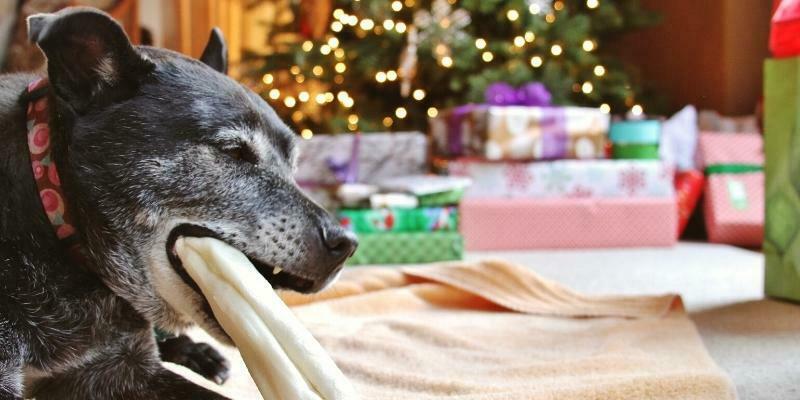 | | | The dangers of bones! | | | | | | | | Whilst it is really tempting to share tasty Christmas roast leftovers with your pet, it’s safest to immediately dispose of any cooked turkey or ham bone remnants into a large, secure outdoor bin, where your pet can’t access them. Why?
Firstly, because dogs and cats are often surprisingly good at performing cheeky raids of indoor bins or exposed bin-bags! And secondly, because at any time of the year, cooked bones unfortunately pose a high risk of harm to your pet.
Why are cooked bones more dangerous for pets?
When cooked, bones become particularly hard and brittle, and therefore frequently break into sharp shards when chewed. These sharp bone shards can cause severe injuries to your pet’s mouth or gut.
Additionally, chewing harder cooked bone can cause fractures of your pet’s teeth, which can be painful and lead to tooth root abscesses.
Are raw bones safe for pets?
Chewing raw bones can help with dental hygiene maintenance, and can give pets good mental stimulation. However, even raw bones can cause issues in some pets, such as:
- Choking (if the pet chews off a small piece of bone that lodges in their throat)
- Gut upset due to harmful bacterial contamination, particularly with raw chicken carcasses
- The development of severe constipation in pets who consume a large volume of bones
- Some dogs demonstrating possessive-aggressive behaviour towards humans or other animals if approached whilst chewing a bone
For this reason, our friendly team would also be happy to discuss recommendations on dog and cat dental diets, chew toys and chew treats designed to maintain dental hygiene and keep your pet busy, without many of the potential dangers associated with bone chewing.
This Christmas, don’t let your pet get mis-”sled” by the temptation of cooked bones! | |
|
|
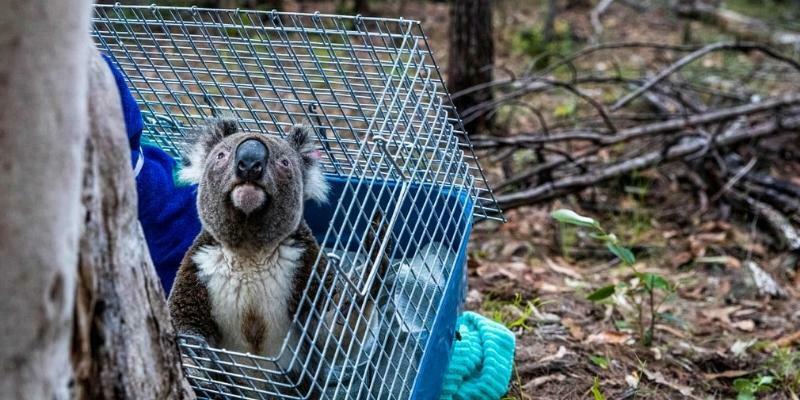 | | | How Christmas carols can help koala conservation this year | | | | | | | | A koala released back into the wild, Queensland.
Image source: The Guardian
The Australian Koala Foundation warns that koalas are in rapid decline around the country, with 30% of the species lost in just three years. Australia’s koala populations aren’t just facing the past and future impacts of fires and drought, but 7.2 million hectares of Australia’s land clearing has meant that much of the iconic marsupial's habitat has been destroyed.
Koalas use eucalyptus trees in forests and woodlands for food and shelter, but due to land clearing they are being forced to the ground, where they are often hit by cars, attacked by dogs or contract diseases, according to WWF Australia.
Deborah Tabart, chairman of the Australian Koala Foundation (AKF), says that protecting habitats is the "only way" to save the species. The AKF is advocating for a Koala Protection Act, which would focus on protecting trees, including currently empty habitats, as opposed to current federal legislation which solely aims to protect the koala species alone. According to the AKF this makes habitats "almost impossible to protect."
With as few as 30,000 koalas remaining in the wild, from their historical peak figure of around 8 million, koalas are now listed on the IUCN's Red List. And if deforestation, lack of climate action and current insufficient wildlife protection legislation continue, koalas could become extinct by 2050.
Just can’t “bear” that news? Well, there is a very, merry way that you can help koalas this Christmas, that won’t even cost you a dime!
A new playlist, available on Spotify and Apple Music, has been curated in the hope of funding a better, more “koality” future for our native friends.
Created by Australian songwriter and environmental scientist, Tony Stephens, the playlist titled ‘Christmas - Your Essential Playlist’, comprises 40 commonly-loved Christmas tunes to inspire holiday cheer and support a very important cause.
Each time the Christmas playlist is listened to, royalties are generated which will then be donated to the AKF to support their ongoing work in research, habitat rehabilitation and preservation of the few remaining viable koala populations.
So when you’re keen on a carol sing-along, look no further than this festive playlist, and spread your Christmas cheer to our koala friends, who really need our help these holidays.
Learn more about koala conservation from The Guardian, WION and ABC News, and read more on the koala Christmas playlist at PRWeb. | |
|
|
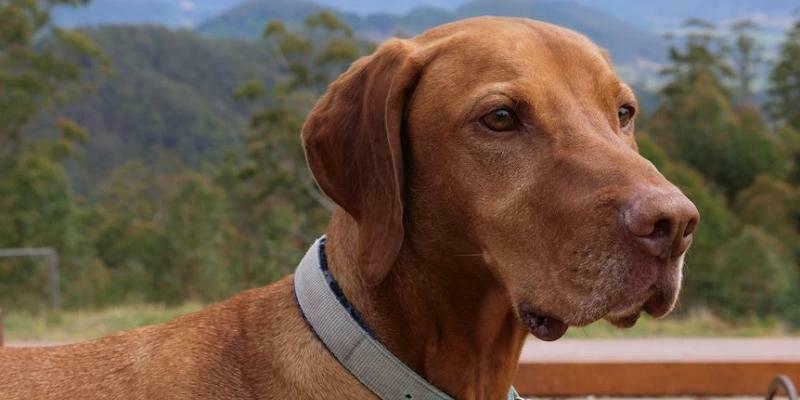 | | | Animal News In Brief | | | | | | | | Zollie the wonder dog.
Image source: the ABC
Are your eggs from ethical sources?
Eggs are a staple for breakfast, brunch, lunch and even the occasional dinner, but how often do you consider the production conditions behind the eggs you eat? You may have heard about the plan to phase out battery hens in Australia by 2036, which aims to balance the needs of the food industry with a hen’s right to a happy life, freeing them as much as possible from hunger, pain and distress. However, there has been opposition to the plan, most recently by New South Wales Agriculture Minister. Kate Hartcher, a senior scientist for animal welfare consultancy Global Food Partners, says that providing a good environment for hens is “crucial.” Even with the egg production industry’s recent proposal for ‘furnished cages’ - designed to include necessities such as perches, nesting boxes and even potentially litter - the cages still prevent hens from positive experiences, such as proper foraging, full exercise or dust bathing in the sun. But there is a sunny-side up to all of this - ethical options are out there! Egg companies like Caravan Eggs in Victoria utilise their extensive property space to keep no more than 90 birds per hectare and provide their hens with unrestricted access to come and go from their ‘chicken caravan’ as they please. The family-owned farm provides their flock with nesting boxes to lay in at their leisure, perch rails and even two maremma dogs for protection from eagles in the day and foxes at night. Eggs from happier hens can even taste better, too! Unlike other barn-laid or cage eggs, ethically-sourced eggs can enhance the ”creaminess of the yolks” and produce “a stronger flavour,” Kate Warner, Caravan Eggs manager, told SBS.
Read more about the quality of a hen’s life from the ABC.
-----
Whale diets and how they affect our ocean ecosystems
New studies have discovered that blue and humpback whales need to eat two-to-three times more to survive than originally thought. When an estimated 1.5 million whales were hunted by humans between 1910 and 1970, it was thought that this loss would benefit krill, the tiny crustaceans eaten by whales, but new research has found that the decreased whale population has in fact caused a decline in krill as well. And it’s not just krill, the loss of these large marine mammals has been found to impact the health and productivity of whole ocean ecosystems. The Southern Ocean is known as one of the most productive ecosystems on Earth, largely because of the microscopic phytoplankton eaten by krill, other small fish and crustaceans. These creatures then get eaten by whales and other fish, who when they defecate, release iron locked within the krill back into the water. Coming full circle, this release of iron is vital to the survival of the phytoplankton. At present, it’s estimated that there are five times less krill in the Southern Ocean than there were in the early 20th-century, but Shirel Kahane-Rapport, a graduate student at Stanford University’s Goldbogen lab and co-author of the new research hopes that “work like this can really get people to consider the ecosystem-wide repercussions of human activities, because we are still continually affecting their environment.”
Read more about where whales fit into our oceans’ ecosystems from SciTechDaily.
-----
Neighbour dog to the rescue!
Back in April, 82-year-old avocado and macadamia farmer from NSW, Graham Bilbe, was caught in a terrible accident when the drive belt of his industrial ride-on mower snapped. With no brakes or steering ability, Mr Bilbe’s leg and right foot became crushed after his mower slid down a hill made slippery by immense rainfall days earlier and landed on top of him. Demonstrating an unbelievable strength, Mr Bilbe managed to claw his injured, bleeding body up the hill to the road., but with no phone service and his neighbours unable to hear him over the sound of their own mower, Mr Bilbe’s situation was dire. If it wasn’t for one brave doggo who came to the rescue, “Graham wouldn't have survived," said Mr Bilbe's partner, Virginia Kelk. Mr Bilbe said he “yelled and yelled and yelled” and then finally, next door’s dog, Zollie, heard him. Mr Bilbe’s neighbours knew there was something wrong when their Zollie, a very quiet dog usually, “barked up a storm” leading them to Mr Bilbe in what neighbour Tim Connell described as “a very desperate situation." Despite requiring a series of surgeries to clean and reconstruct part of his right leg, including rebuilding his calf, six months later Mr Bilbe is back home on his farm in recovery and able to carry out "light duties.” Mr Bilbe is ever thankful to the heroic Zollie, and dubs him a true “wonder dog.”
Read more about the neighbourhood wonder dog from the ABC. | |
|
|
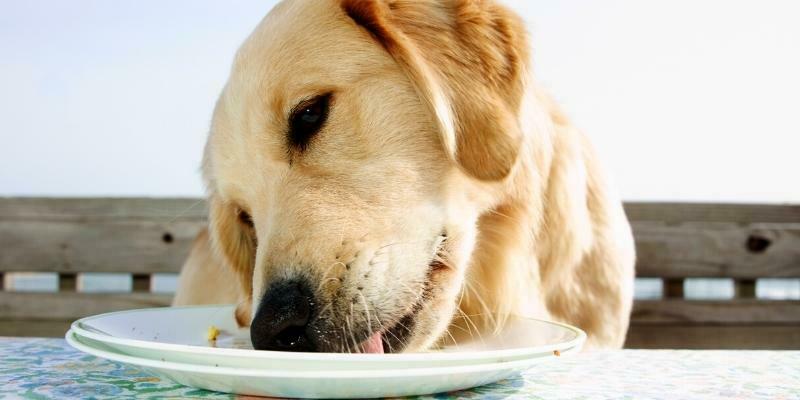 | | | The skinny on fatty foods and dogs | | | | | | | | Unfortunately, whilst most dogs would really love a hearty meal of Christmas ham and crackling, or a bowl filled with turkey meat, it’s best to be really careful about feeding these types of foods to our pets.
How can fatty foods be dangerous to dogs?
Whilst some dogs may appear to have “cast iron stomachs”, a fatty meal can cause significant unwellness in some unlucky others, sometimes triggering issues such as dietary-related gastroenteritis (gut upset) or pancreatitis!
I’ve heard of gastroenteritis, but what is pancreatitis?
Pancreatitis is painful inflammation of the pancreas organ in the abdominal cavity. The pancreas contains inactive digestive enzymes, which are normally released into the small intestine and then activated to help digest food.
In pancreatitis, these digestive enzymes activate prematurely whilst still inside the pancreas, causing tissue damage, inflammation and pain.
Symptoms of pancreatitis
Most pets with pancreatitis show symptoms similar to a significant gut upset, including vomiting, lethargy, abdominal pain and a poor appetite. In severe cases, pets may become very dehydrated and can even progress into cardiovascular shock.
How is pancreatitis treated?
Pancreatitis can’t be specifically treated, but its healing is aided by general supportive care to keep pets hydrated, comfortable and able to eat sufficiently. In many cases, this requires admission to hospital for intravenous fluids, injectable pain relief and stomach-settling medications.
So, what can I safely feed my dog?
If your dog hasn’t had any prior pancreatitis or gut issues, it’s generally safest to offer low-fat cuts of cooked turkey or chicken breast or boneless salmon, with occasional slivers (finger-nail sized) of fattier meat for a special treat.
Pets who have a history of pancreatitis are best to stick with a prescription low-fat digestible diet, to help minimise stimulation to their pancreas.
So, to help your dog have a happy howl-idays, skip the fatty foods! | |
|
|
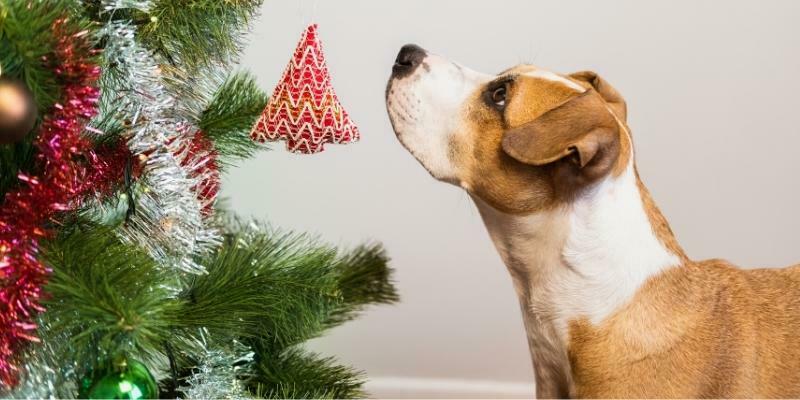 | | | What might Santa bring your dog? | | | | | | | | For a very happy canine this Christmas, consider organising one of these dog-friendly gifts for your four-legged friend!
Toys
If your pet loves playing fetch, you could consider a mouth-friendly toy made from tough, chew-resistant rubber or fabric. Whilst many dogs love chasing tennis balls and sticks, long-term tennis ball usage can cause heavy wearing of your dog’s teeth over time, whilst sticks pose a risk of mouth and throat injuries.
Ensure that any toy you pick is correctly sized for your dog (i.e. not small enough to fit entirely inside their mouth, which could pose a choking risk).
For solo play, consider an interactive food puzzle toy, which can provide your pet with great mental stimulation when they’re home alone!
Dog treats
We advise picking low-fat treats, such as Australian-made dried chicken breast or beef liver treats, or safe dental chew treats (provided that your dog chews these up properly before trying to swallow).
If you’re feeling particularly merry, you could also consider baking a batch of yummy dog treats, such as these sweet potato cookies!
If your pet has any special dietary or dental needs, ask our team for further advice on what treat would suit your pet best.
A new activity
For most dogs, quality time with their owner is the best present of all! If your dog is reasonably athletic, consider enrolling in a fun new activity together, such as agility or flyball. Other dogs may enjoy the calm focus and owner-bonding time that comes with advanced obedience classes.
And if you and your dog love to get outdoors, research a new dog-friendly walking route that you can explore together.
Regardless of what present “Santa Paws” brings your dog, we guarantee that you’ll have one very happy, furry family member this holiday season! “Fur”-liz Navidad! | |
|
|
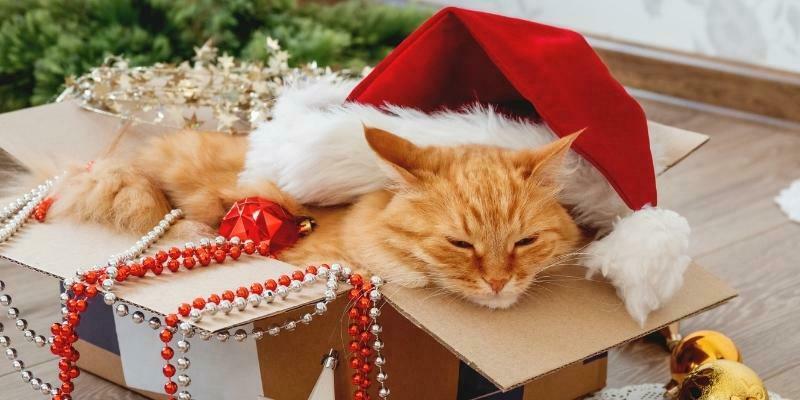 | | | What might Santa bring your cat? | | | | | | | | Looking for the “purr-fect” Christmas gift for your cat? Whilst there are some pretty excellent cat toys available online, it’s also possible to give your cat a great home-made present too!
Cat furniture
Cat furniture provides your cat with an interesting environment that allows the performance of some normal feline behaviours. This is particularly important for indoor cats.
With this in mind, potential gift ideas include:
- A cat tree, for scratching, climbing and jumping opportunities
- A horizontal cat scratcher/lounger
- A window cat hammock – perfect for resting whilst watching the great outdoors!
- An outdoor enclosure or cat-pram for safe outdoor exploration
Many cats will also love their own large pot of cat grass to nibble on!
Toys and games
If your cat is the playful type, they’ll probably enjoy an exciting new interactive toy. Depending on their preferences, you could consider offering:
- Dangling “fishing rod” style toys for them to swat at
- A laser pointer to chase (provided games last only a few minutes, and your cat is provided with a little toy to actually “catch” at the end of the game!) [as not always recommended]
- Ping pong balls or some scrunched up paper for your cat to bat and chase around the room
Food-motivated cats will also enjoy interactive food puzzle toys, such as puzzle board feeders.
Lastly, don’t underestimate the fun that a good old cardboard box can provide for your cat. Cut holes in particularly large boxes and watch your cat peek out happily!
Treats
This category is pretty self-explanatory, though it’s safest to stick with Australian-made cat treats, due to the association of some non-Australian jerky-style treats with potential kidney toxicity. Feel free to ask our team for advice on some cat-safe festive treats to offer your feline friend.
With a bit of preparation, you can give even the most discerning kitty a very “meow-y” Christmas! | |
|
|
| | This email contains comments of a general nature only and is not intended to be a substitute for professional veterinary advice. It should not be relied on as the basis for whether you do or don't do anything.
All content © Petpack 2021 | |
|
|
This email was sent to:
email@example.com
Champion Lake Vet Centre
121 Westfield Rd
Camillo, WA 6111
|
|
|
|